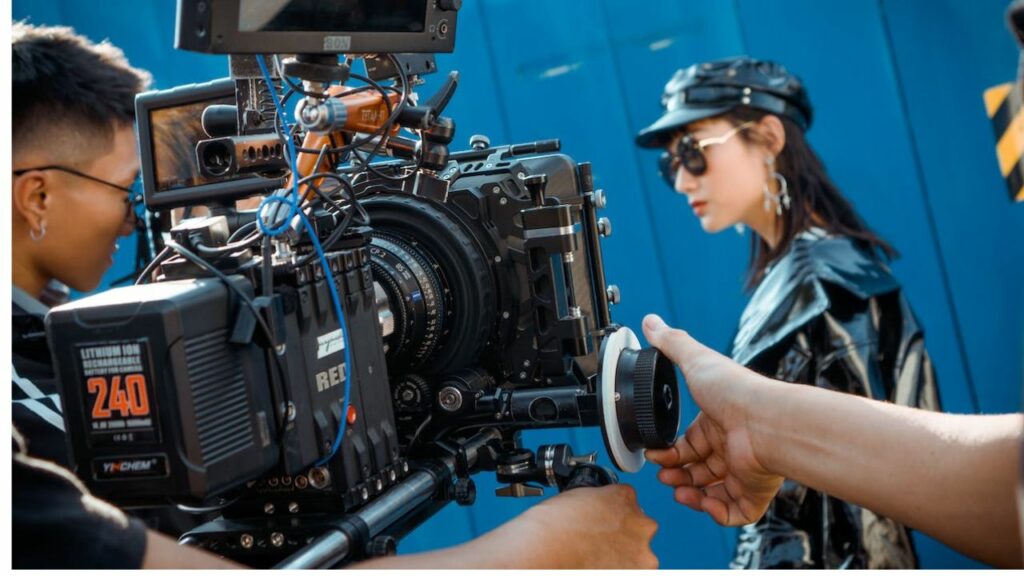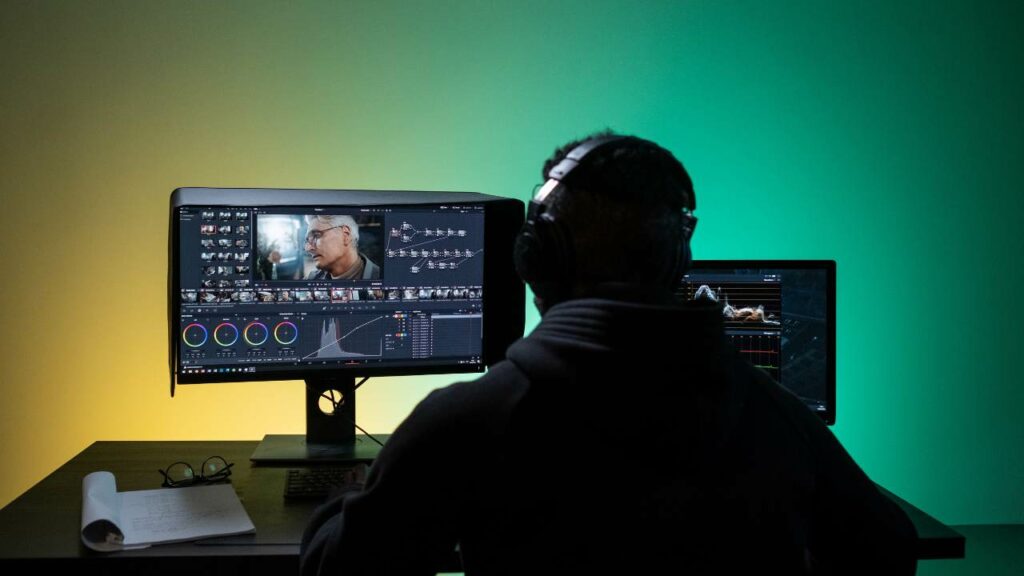Dive into the enthralling realm of video production – an intricate dance of technical prowess and artistic flair. This guide is your key to unlock the secrets of producing riveting content, be it films, documentaries, or persuasive promotional materials.
We’ll illuminate every stage of the process: meticulous pre-production planning, the thrill of filming, and the finesse of post-production. Whether you’re an aspiring videographer yearning to craft compelling stories or a professional intent on refining your skills, this comprehensive journey into video production will foster your growth and ignite your creativity.
Mastering the Skills
Planning and Storyboarding
To master the art of video production, developing good planning and storyboarding skills is essential. A professional videographer should be able to create a clear and concise storyboard that outlines the flow and visual elements of the video.
This process helps ensure that the final product effectively communicates the intended message to the audience. When planning a video project, consider elements such as the target audience, budget, locations, and the overall tone of the piece. If your budget is really tight, our guide to DIY video production will be of great help.
Videography and Camera Work
A solid understanding of videography and camera work is fundamental to any video production. Skilful videographers must be familiar with various cameras and their respective features.
Additionally, they should have a comprehensive understanding of photography principles, such as framing, composition, and exposure. In captivating visual storytelling, it is crucial to choose the appropriate gear and camera settings to create compelling visuals that connect with the intended audience.
Lighting Techniques
In video production, mastering lighting techniques can greatly enhance the visual quality of the project. Proper lighting can help set the mood, create depth, and add dimension to the scene.
It is important for videographers to be familiar with different types of lights, such as natural, artificial, and studio lighting. Experimentation and practice can help refine one’s lighting skills to create visually stunning videos.
Sound Recording and Editing
Audio quality is a crucial aspect of professional video production. To ensure that the final video has clear and clean audio, a videographer must be proficient in sound recording techniques.
Using quality microphones and proper placement can greatly improve the audio captured on set. Additionally, the videographer should have the ability to edit and mix audio in post-production to enhance the overall sound quality and ensure it complements the visuals.
Video Content Creation
Video content creation is an essential skill for various industries ranging from marketing to entertainment.
Skilled videographers can produce high-quality video content that captivates audiences and effectively communicates their message. This section will explore various types of video projects, including documentaries, event and wedding videos, social media videos, promotional videos and marketing videos, and YouTube content.
Documentaries
Documentaries are a popular form of video content that aim to inform and educate audiences about real-life events, stories, and issues. Videographers in this field need to develop strong storytelling abilities and an understanding of journalism to create compelling and engaging documentaries.
Event and Wedding Videos
Event and wedding videographers are hired to capture special moments and create lasting memories.
They must be skilled in filming live events, as well as directing and editing the footage in a way that showcases the unique atmosphere of the occasion. Key elements of event and wedding videos include capturing speeches, candid moments, and highlights of the celebration.
Social Media Videos
Social media videos are designed to capture the attention of online audiences and often require a different approach than traditional video content.
Videographers creating content for platforms like Instagram, TikTok, and Facebook need to be familiar with the specific requirements and limitations of each platform, such as video length and format. Successful social media videos often feature engaging visuals and concise storytelling to keep viewers hooked.
Promotional and Marketing Videos
Promotional and marketing videos are created to advertise a product, service, or brand. This type of video content requires a strong understanding of marketing principles and the target audience’s needs and preferences.
High-quality promotional videos should effectively showcase the features and benefits of the offering while creating an emotional connection with the viewer, driving interest and conversions.
YouTube Content
YouTube has become a staple platform for content creators across various niches, from lifestyle vloggers to professional filmmakers.
Successful YouTubers combine engaging storytelling with visually appealing video content to both entertain and inform their audience. Videographers working on YouTube projects should focus on techniques that cater to the platform’s algorithm, such as thumbnail design and video length, to increase their chances of being discovered by viewers.
The Editing Process
Cutting and Trimming Footage
The art of video editing begins with cutting and trimming footage. This step involves selecting the best shots from your raw footage and cutting them into a coherent sequence.
It’s essential to remove any unwanted scenes or mistakes to create a smooth flow in the final video. The process of cutting and trimming can significantly improve the overall quality and storytelling of a video, making it more engaging and visually appealing to viewers.
Adding Music and Sound Effects
Another important aspect of video editing is the integration of music and sound effects. Incorporating fitting music or soundscapes can enhance the emotional impact and atmosphere of your video.
It’s essential to select music that complements the mood and tone of your film, whether it’s a dramatic score or an uplifting tune. Additionally, sound effects can add depth and immersion to your footage.
Check out our checklist for creating a captivating corporate video as well.
Special Visual Effects
In mastering the art of video production, incorporating special visual effects (VFX) can provide an extra layer of polish and creativity to your work.
Some common visual effects include:
- Colour correction and grading
- Text overlays and titles
- Green screen compositing
- Motion tracking and 3D animations
Narrative and Visual Storytelling
Scriptwriting and Dialogue
Narrative and visual storytelling are essential elements in mastering the art of video production. A strong script with engaging dialogue helps convey the story’s message and establish the foundation for a captivating visual experience.
Scriptwriting involves crafting a cohesive story, developing relatable characters, and establishing an engaging pace. Once the script is written, it’s crucial to have clear and impactful dialogue that drives the story forward, revealing the characters’ emotions and motives.
Engaging the Audience
A successful video production keeps the audience engaged from start to finish. This can be achieved by focusing on the following aspects:
- Captivating storylines: Present a unique and compelling idea that resonates with the target audience.
- Emotional connections: Evoke emotions that allow the audience to resonate with the story on a deeper level.
- Clear message: Ensure that the core message remains apparent throughout the story.
- Dynamic pacing: Implement varying levels of intensity and suspense to maintain audience interest.
Camera Angles and Movement
Incorporating creative camera angles and movement is a crucial aspect of visual storytelling that can enhance the storyboarding process. The choice of camera angles can reveal character perspectives, highlight emotions or emphasise specific actions. Some commonly used camera angles in video production include:
- Wide shot: Used to establish the setting and display the characters’ relationship with their environments.
- Medium shot: Helps to focus on a character’s expressions and gestures more closely.
- Close-up shot: Captures intense emotions and important details by focusing on a character’s face or a specific object.
- Low angle: Shows a character from below, often exuding power or dominance.
- High angle: Displays a character from above, signifying vulnerability or weakness.
When it comes to camera movement, the following techniques can enhance the narrative and evoke various emotions:
- Pan: A horizontal movement that can reveal the setting or follow a character’s movement.
- Tilt: A vertical movement providing new perspectives on a scene or highlighting details.
- Dolly/Tracking shot: A smooth movement that follows characters or objects, creating a sense of fluidity and continuity.
- Handheld shot: Offers a sense of immediacy and candidness, often used in action scenes or documentaries.
Directing and Producing
Communication and Collaboration
Directing and producing are essential aspects of mastering the art of video production. Communication and collaboration play a critical role in delivering a successful project.
A director and producer need to work closely together to ensure that their creative video vision aligns with the practical aspects of production. They should establish an open dialogue, facilitating a smooth process from pre-production to post-production.
Finding Your Style and Vision
Developing your own distinct style and vision is a vital part of becoming a successful director and producer. Drawing inspiration from different sources will help shape your unique creative voice. As you gain experience, your passion for storytelling will drive your creativity, refining your style and vision further.
Understanding Your Audience
A critical aspect of directing and producing is knowing your audience. This understanding is necessary to create content that resonates with the viewers and meets their expectations.
Knowing your target demographic will help inform your creative decisions, from story and characters to visual style and pacing. Research on market trends will also provide valuable insights, ensuring that your video production is relevant and appealing.
Conclusion
Mastering video production is an enriching journey of technical knowledge, artistic interpretation, and ceaseless learning.
As you embark on this captivating voyage, may this guide serve as your trusted compass, leading you to create compelling, impactful narratives that resonate deeply with your audience. Remember, the world is your stage; direct it wisely.







